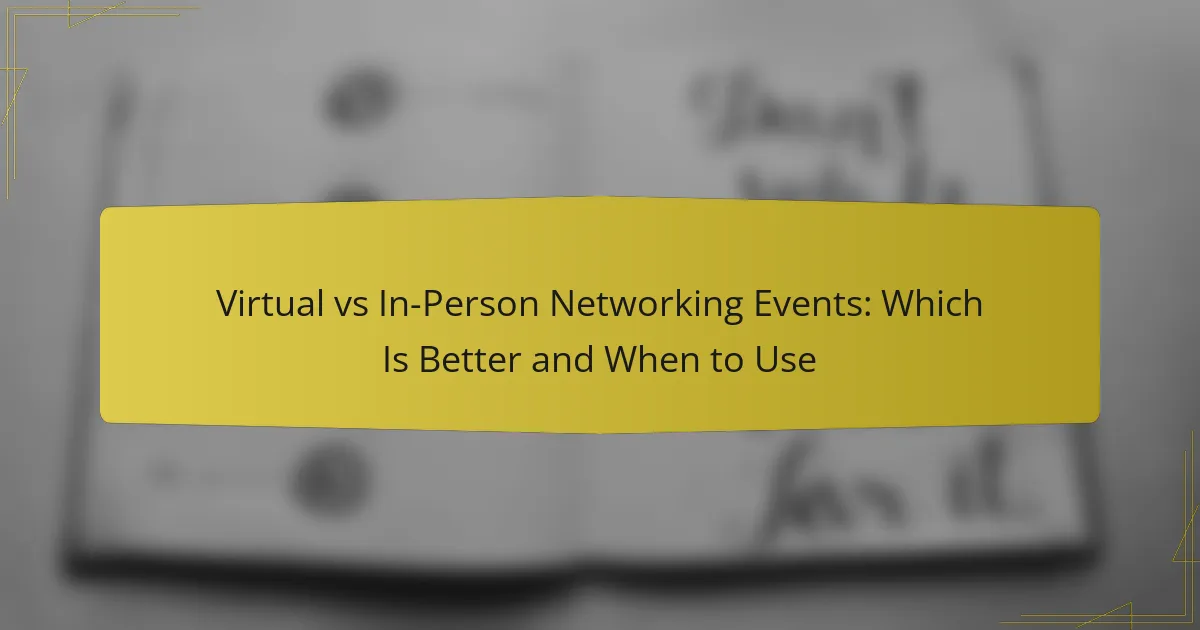As networking continues to evolve, understanding the strengths of virtual and in-person events is essential for maximizing connections. Virtual events provide accessibility and convenience, making them suitable for those facing geographical or budget constraints. In contrast, in-person gatherings excel in fostering deeper relationships and trust through direct interactions, making them ideal for building lasting connections within local industries.
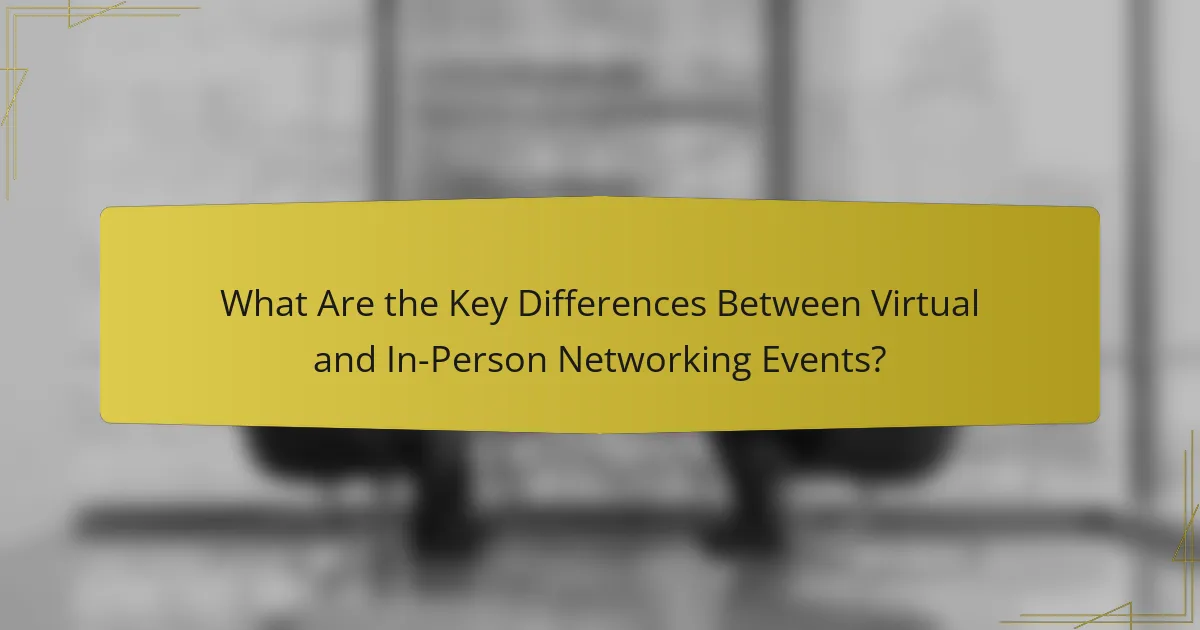
What Are the Key Differences Between Virtual and In-Person Networking Events?
Virtual and in-person networking events differ primarily in their format, accessibility, and interaction dynamics. While virtual events offer convenience and broader reach, in-person gatherings foster deeper connections through face-to-face interactions.
Accessibility and Convenience
Virtual networking events are generally more accessible, allowing participants from various locations to join without travel costs or time constraints. This format is ideal for those with busy schedules or geographical limitations.
In-person events, while potentially more engaging, require attendees to allocate time for travel and accommodation, which can be a barrier for many. Consider your audience’s location and availability when choosing the format.
Engagement and Interaction Levels
In-person networking typically allows for richer engagement through body language and spontaneous conversations, leading to stronger connections. Attendees can easily mingle, share experiences, and build rapport in a more natural setting.
Conversely, virtual events often rely on chat functions and breakout rooms, which can limit the depth of interaction. However, they can incorporate interactive elements like polls and Q&A sessions to enhance engagement.
Cost Considerations
Virtual events usually have lower costs associated with venue rental, catering, and travel, making them budget-friendly options for many organizations. Expenses may include software subscriptions and promotional materials.
In-person events often involve higher costs, including venue fees, food and drink, and travel expenses for attendees. Weighing these costs against the potential benefits of face-to-face networking is crucial for decision-making.
Networking Opportunities
In-person events provide unique networking opportunities, allowing for organic conversations and relationship-building that can lead to collaborations and partnerships. The atmosphere often encourages attendees to connect more freely.
Virtual events can also offer networking opportunities, but they may require more structured approaches, such as scheduled breakout sessions or dedicated networking times. Consider the goals of your networking efforts when selecting the format.
Technology Requirements
Virtual networking events necessitate reliable internet access and familiarity with digital platforms, which can be a hurdle for some participants. Ensure that your chosen technology is user-friendly and accessible to your audience.
In-person events do not have the same technological demands, but they may require equipment for presentations or demonstrations. Always have backup plans for technology failures, regardless of the event type.
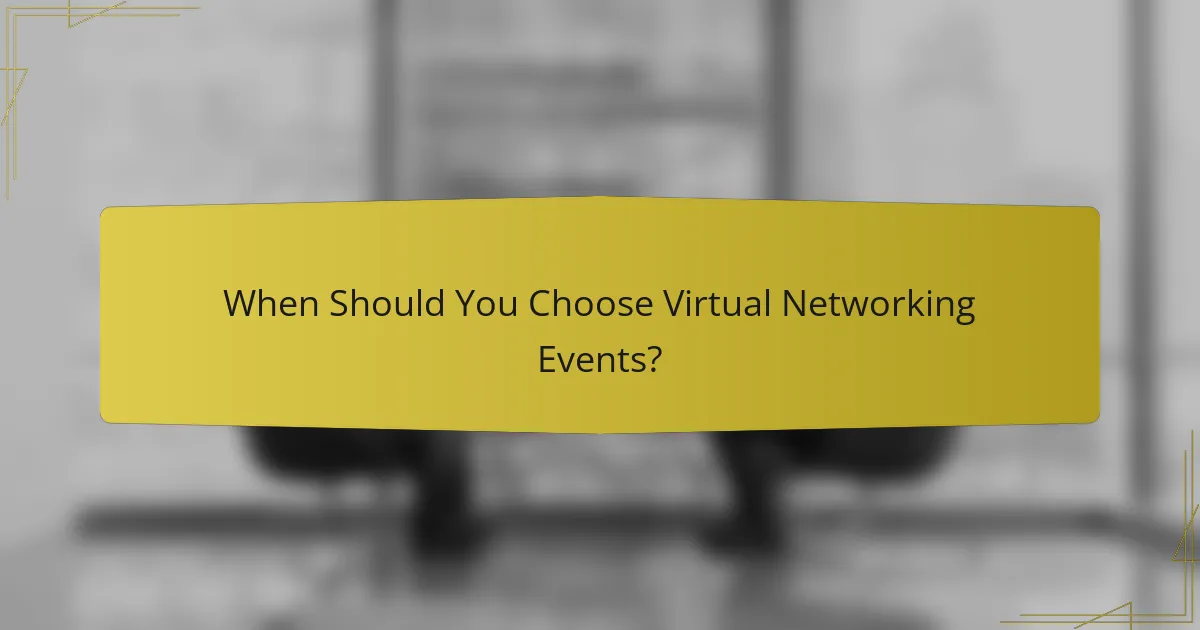
When Should You Choose Virtual Networking Events?
Virtual networking events are ideal when geographical barriers, budget constraints, or scheduling flexibility are significant considerations. They allow participants to connect from anywhere, often at a lower cost and with more adaptable timing.
Geographic Limitations
Virtual networking events eliminate geographic limitations, enabling connections across cities, states, or even countries. This is particularly beneficial for professionals in remote areas or those looking to expand their network beyond local confines.
For example, a tech startup in Bulgaria can easily connect with investors in Silicon Valley without the need for travel expenses. This broadens the potential for collaboration and partnership opportunities significantly.
Cost-Effective Options
Participating in virtual networking events typically incurs lower costs compared to in-person gatherings. Expenses such as travel, accommodation, and venue hire are often eliminated, making it a budget-friendly option.
Many virtual events are free or charge a nominal fee, allowing attendees to invest their resources in other areas, such as marketing or product development. This cost-effectiveness is particularly appealing for startups and small businesses.
Flexible Scheduling
Virtual networking events often offer greater scheduling flexibility, accommodating various time zones and personal commitments. Many events are recorded, allowing participants to engage with content at their convenience.
For instance, a professional can attend a live session in the evening after work or watch a recorded version later if they have prior commitments. This flexibility makes it easier to balance networking with other responsibilities.
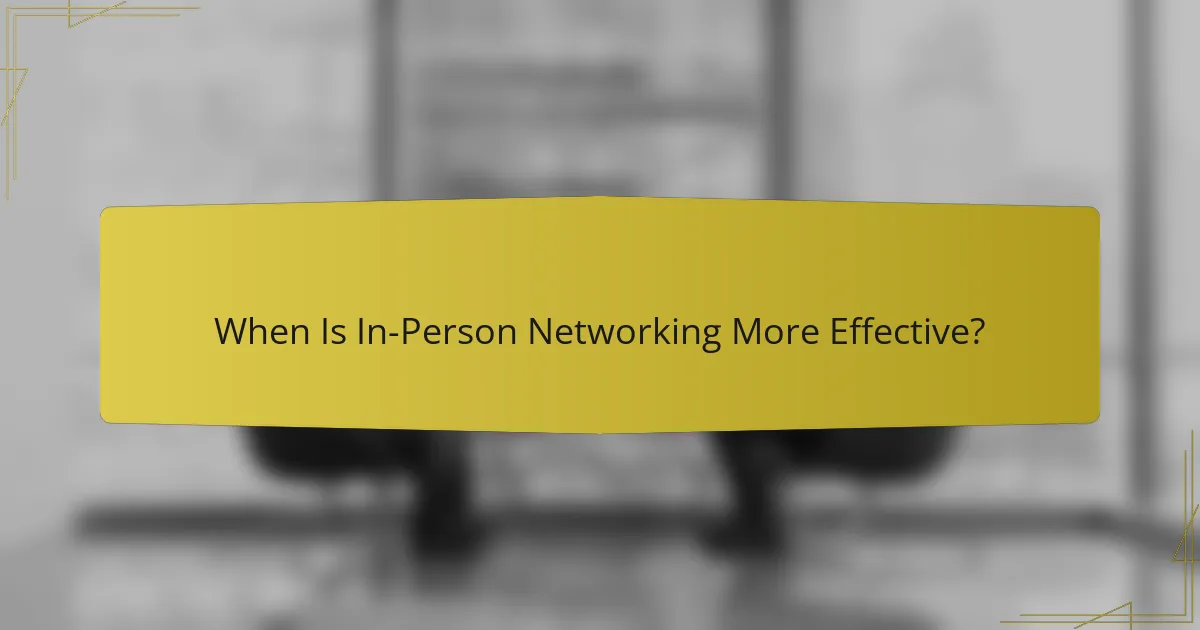
When Is In-Person Networking More Effective?
In-person networking is often more effective when building deep connections, sharing experiences, and engaging with local industries. Face-to-face interactions can foster trust and rapport that virtual events may struggle to achieve.
Building Stronger Relationships
In-person networking allows for more genuine interactions, which can lead to stronger relationships. When meeting face-to-face, non-verbal cues such as body language and eye contact enhance communication and connection.
Consider attending local meetups or industry conferences where you can engage in meaningful conversations. Follow up with personal notes or messages to reinforce these connections and show appreciation for the time spent together.
Hands-On Experiences
Hands-on experiences are more readily available at in-person events, where participants can engage in workshops, demonstrations, or collaborative activities. These experiences often lead to a deeper understanding of topics and skills.
For example, attending a live workshop on software development can provide immediate feedback and practical insights that are difficult to replicate online. Look for events that offer interactive sessions to maximize your learning and networking potential.
Local Industry Connections
In-person networking is particularly effective for making local industry connections. Being physically present in your area allows you to meet professionals who share your regional context and challenges.
Participate in local business events, trade shows, or community gatherings to establish relationships with industry leaders and peers. These connections can lead to collaboration opportunities, mentorship, and insights specific to your local market.
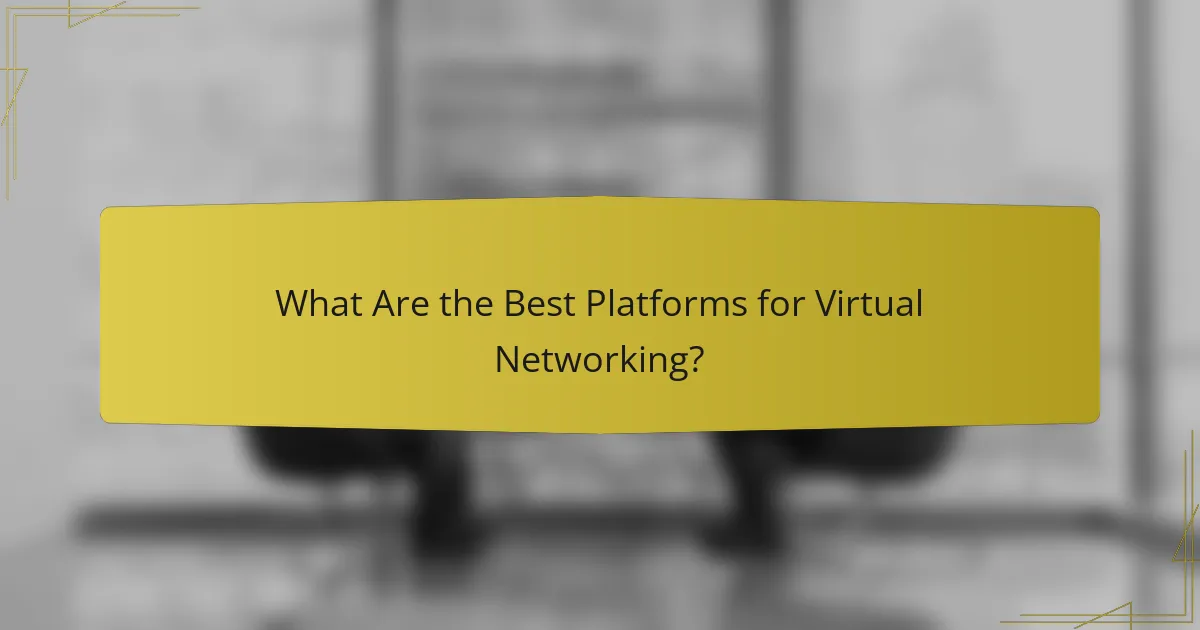
What Are the Best Platforms for Virtual Networking?
The best platforms for virtual networking cater to different needs, such as webinars, interactive events, or professional connections. Choosing the right platform depends on your goals, audience, and the type of engagement you seek.
Zoom for Webinars
Zoom is widely recognized for its robust webinar capabilities, allowing hosts to engage with large audiences effectively. It supports features like screen sharing, polls, and Q&A sessions, making it ideal for informative presentations.
When using Zoom for webinars, ensure you have a clear agenda and promote interaction through polls or chat. A common pitfall is neglecting to rehearse; practice can help avoid technical glitches and ensure a smooth experience.
Hopin for Interactive Events
Hopin is designed for immersive, interactive events, offering features like breakout rooms and networking tables. This platform is suitable for conferences or workshops where participant engagement is crucial.
To maximize the effectiveness of Hopin, create a well-structured agenda that encourages networking and interaction. Be mindful of time zones if your audience is global, and consider scheduling sessions to accommodate various regions.
LinkedIn for Professional Networking
LinkedIn is a premier platform for professional networking, allowing users to connect, share content, and engage in industry-specific discussions. It’s particularly useful for building relationships and showcasing expertise.
To leverage LinkedIn effectively, regularly update your profile and engage with your network through posts and comments. Avoid sending generic connection requests; personalize your messages to increase acceptance rates and foster genuine connections.
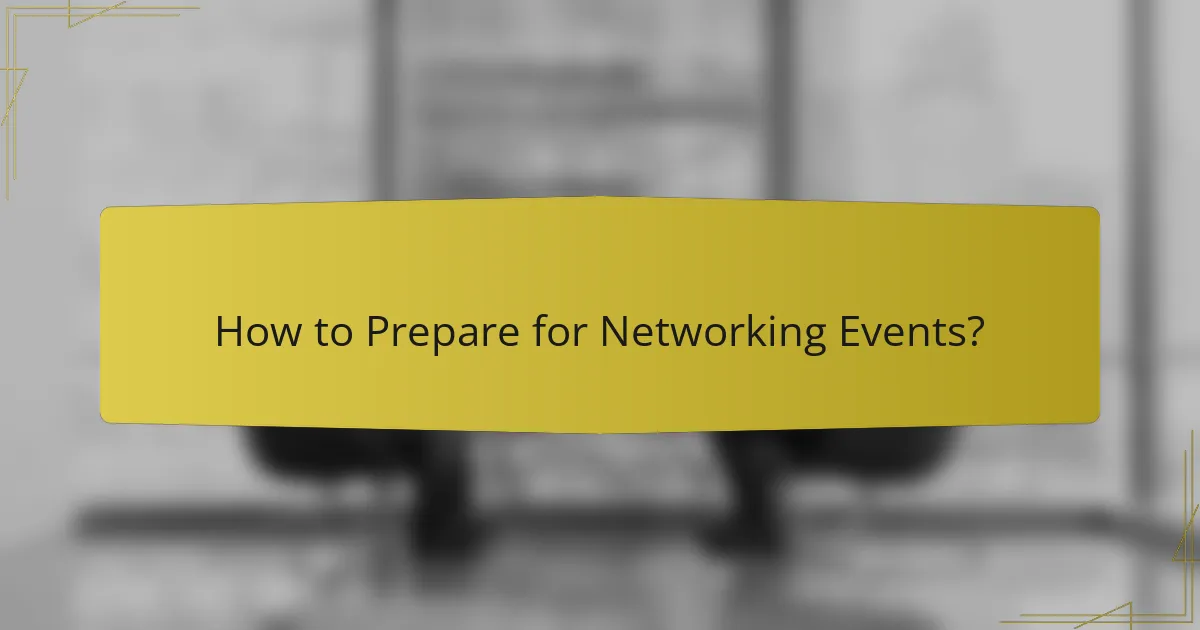
How to Prepare for Networking Events?
Preparing for networking events involves setting clear goals and understanding the attendees. This ensures you make meaningful connections and utilize your time effectively.
Setting Clear Objectives
Before attending a networking event, define what you want to achieve. Objectives can range from finding potential clients to seeking mentorship or exploring job opportunities.
Consider writing down your goals to keep them top of mind. For example, aim to connect with at least three industry professionals or gather insights on a specific topic.
Be flexible with your objectives; sometimes, unexpected conversations can lead to valuable opportunities. Adjust your goals based on the event’s atmosphere and the people you meet.
Researching Attendees
Understanding who will be at the networking event can significantly enhance your experience. Look for attendee lists or social media groups related to the event to identify key individuals.
Focus on professionals whose interests align with yours. For instance, if you’re in tech, seek out developers, recruiters, or industry leaders who can provide insights or opportunities.
Prepare a few conversation starters tailored to the attendees you want to connect with. This can include questions about their work or recent industry trends, making it easier to engage meaningfully.
